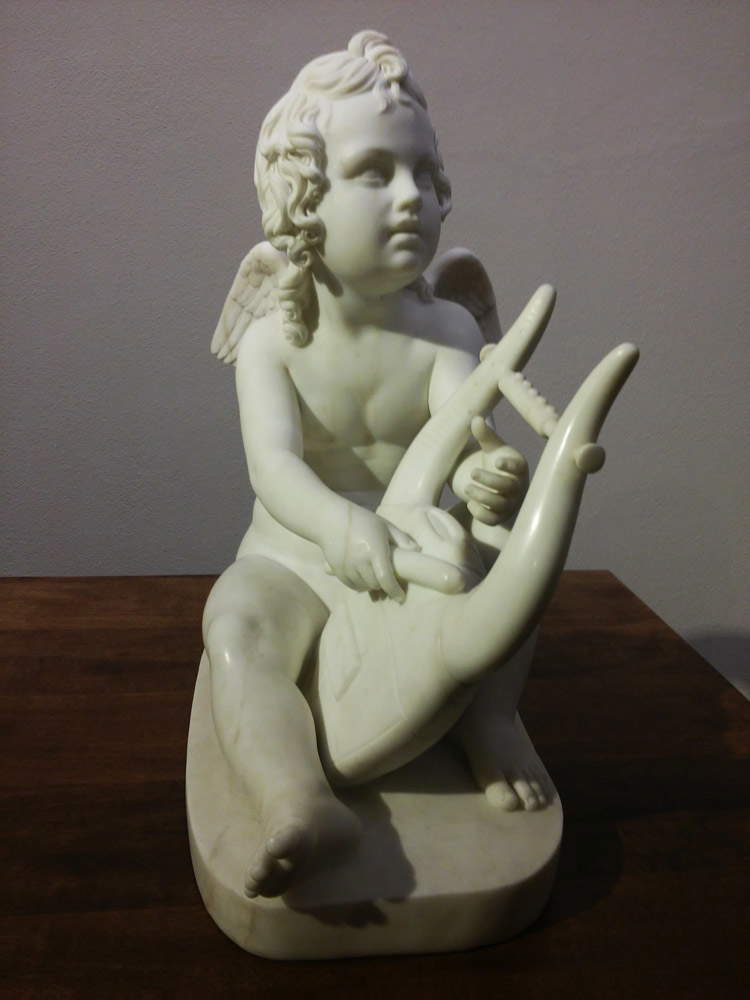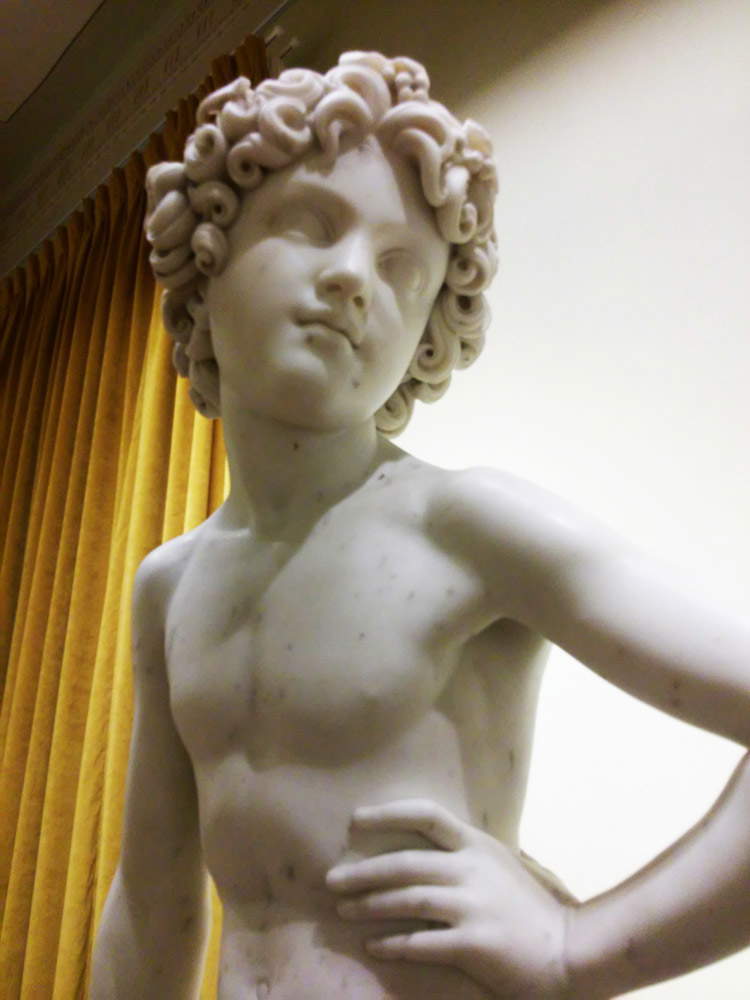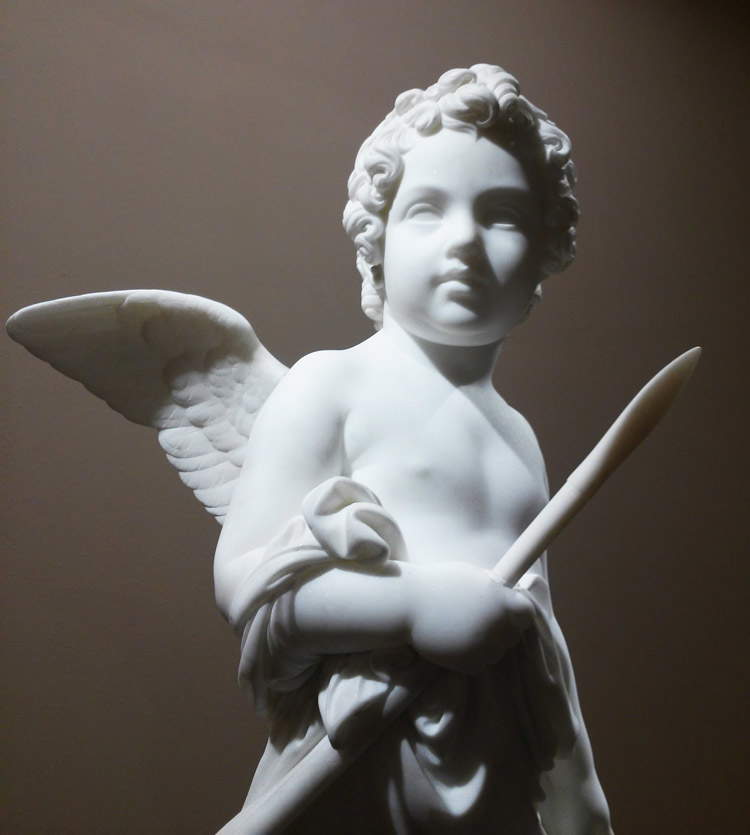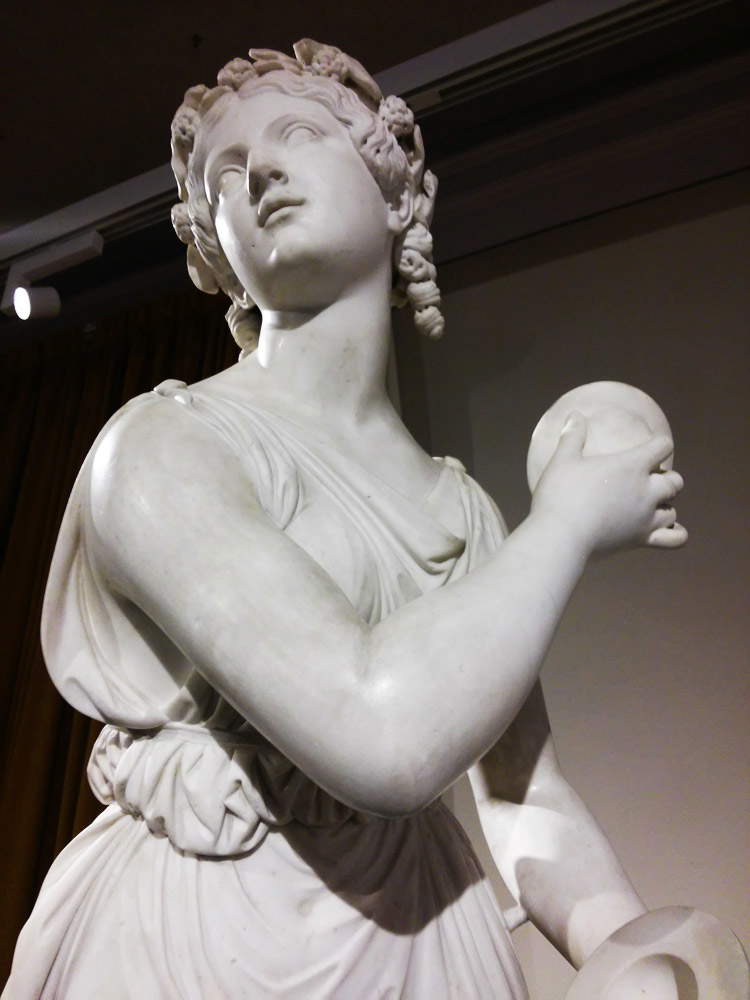The exhibition After Canova. Paths of Sculpture in Florence and Rome, which is being held in Carrara, at Palazzo Cucchiari, until October 22. A presentation, the one that took place on Friday afternoon in the courtyard of the palace, under the banner of sobriety and elegance, as is typical of Palazzo Cucchiari. It was opened by Franca Conti, chairwoman of the Giorgio Conti Foundation (the organizing body, which is based in the palace), who after a quick presentation of the activities of the Foundation itself thanked all the lenders (the Hermitage in St. Petersburg, the National Gallery of Modern Art in Rome, the Antonacci Gallery in Rome, the Galleria d’Arte Moderna di Palazzo Pitti in Florence, the Opera Metropolitana di Siena, the Banca Monte dei Paschi di Siena, the Accademia di Belle Arti di Carrara, the Marchini Collection in Carrara, and the Municipality of Montignoso) and the various parties involved in organizing the exhibition, and then introduced the three curators: Sergej Androsov, Massimo Bertozzi and Ettore Spalletti.
Spalletti wanted to explain to the audience the reasons for the exhibition: to explore the lines and trends in the field of sculpture following the death of Antonio Canova. On the one hand, therefore, sculptors who remained more or less faithful to the neoclassicism of Canova and also to the more stringent neoclassicism of Bertel Thorvaldsen by developing their own reflections, while on the other were the proponents of purism, who starting from a reinterpretation of Renaissance art tried to approach a more vivid naturalism, to reach the threshold of verist sculpture at the end of the 19th century. Spalletti also listed the artists on view in the exhibition, from the aforementioned Canova and Thorvaldsen to Lorenzo Bartolini, Pietro Tenerani, Carlo Finelli, Giovanni Dupré, Luigi Bienaimé, Tito Sarrocchi, Pio Fedi, Pasquale Romanelli, Luigi Pampaloni, Aristodemo Costoli, Rinaldo Rinaldi, and Emil Wolff. “We have tried to follow a chronological thread,” Spalletti explained, “dividing the Roman and Florentine sections on the two floors on which the exhibition is spread.”
Androsov first mentioned three works that in his opinion are fundamental in order to best understand the exhibition’s message: these are Canova’sWinged Love, Bartolini’sAmmostatore, and Giovanni Dupré’s Abandoned Sappho (to which Finestre sull’Arte will devote specific in-depth studies). The Russian art historian also traced the history of Palazzo Cucchiari, which has only been active for two years, but has already been able to carve out a leading role for itself thanks to high-profile scholarly exhibitions, all aimed at highlighting aspects of art at the turn of the 18th and 19th centuries, from the first exhibition on the Carrarese school formed on the example of Canova (2015) to the one on the artists of the Grand Tour (2016). “From these exhibitions,” Androsov stressed, “Palazzo Cucchiari received its own significance, not only Italian but also international.”
Finally, Bertozzi wanted to provide the audience with some interesting insights to better frame the context within which the exhibition takes place. “There is no doubt that in the first half of the nineteenth century the problem is that of coming to terms with Canova: world sculpture in the first half of the nineteenth century has the problem of how to get rid of this figure, this beacon, which continues, rather than illuminating, to dazzle and deflect, to hide the traces. The consequence of all this is that in Italy and in Europe we are witnessing the resurgence of regional schools: everyone tries to look for answers on how to renew the languages of sculpture in previous situations, which in Italy are by necessity regional. This is happening in a more convinced and more reasoned way in two places that are particularly important for sculpture, namely Florence and Rome.” Finally, the curator closed by clarifying why precisely the sculptors that the public will be able to appreciate in the exhibition were chosen: because of the fact that they are particularly expressive and significant figures, and because they have produced a series of works that make manifest the intention to read this path of enfranchisement from the figure of Canova and renewal of languages.
The exhibition (official website: canovacarrara.it) will remain open until Oct. 22: on Tuesdays, Wednesdays, Thursdays and Sundays the hours are 10 a.m.-12 p.m. and 5 p.m.-2 p.m., and on Fridays and Saturdays 10 a.m.-12 p.m. and 5 p.m.-11:30 p.m. Admission (always with audioguide included): 10 euros full, 8 euros reduced for children aged 9 to 18, over 65 and Touring Club members, free for children under 8 accompanied by parents, disabled with accompanying person, journalists of the Order. Groups from 10 to 29 people 8 euros with audio guide, more than 30 people 6 euros with audio guide, schoolchildren of all ages 4 euros without audio guide and two free for accompanying persons. Information at 0585 72355. Finestre Sull’Arte is official media partner.
A selection of photographs of some of the works in the exhibition:
 |
| Antonio Canova, Funeral Monument to Vittorio Alfieri, detail (1806; plaster model, height 81 cm; Carrara, Academy of Fine Arts) |
 |
| Bertel Thorvaldsen, Cupid Playing the Lyre (1819; marble, height 58 cm; St. Petersburg, Hermitage) |
 |
| Lorenzo Bartolini, The Ammostatore, detail (1818; marble, height 128 cm; St. Petersburg, Hermitage) |
 |
| Carlo Finelli, The Three Graces (1853; marble, 158 x 119 x 67 cm; Rome, Galleria Francesca Antonacci) |
 |
| Pietro Tenerani, Genius of the Hunt, detail (1824-25; marble, 92 x 46 x 38 cm; Carrara, Accademia di Belle Arti) |
 |
| Giovanni Dupré, Love in Ambush, detail (1858; marble, height 66 cm; Siena, Banca Monte dei Paschi Collection) |
 |
| Pio Fedi, Nello with Pia, detail (1860; marble, height 85 cm; Florence, Galleria d’Arte Moderna di Palazzo Pitti) |
 |
| Luigi Bienaimé, Bacchante, detail (1846; marble, height 149 cm; Rome, Galleria Francesca Antonacci) |
Warning: the translation into English of the original Italian article was created using automatic tools. We undertake to review all articles, but we do not guarantee the total absence of inaccuracies in the translation due to the program. You can find the original by clicking on the ITA button. If you find any mistake,please contact us.